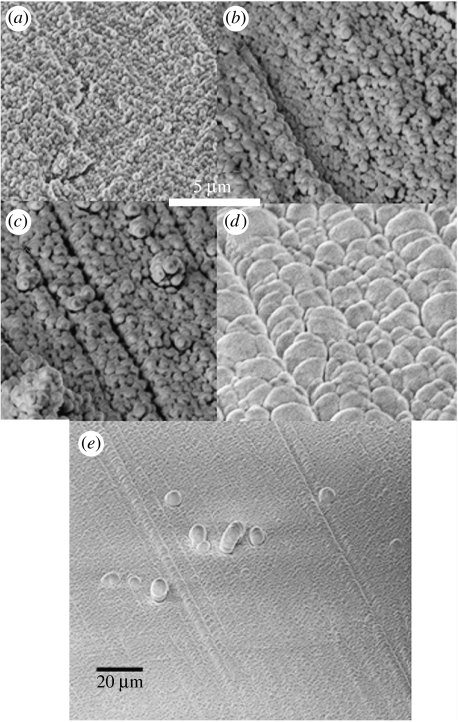Figure 3.
SEM images showing the effect of raising the temperature of subunit c vesicles from 83 to 233 K to sublime the central water. (a) Vesicles of subunit c are initially less than 1 μm in diameter on the Al stub at 83 K. (b) They expand on warming as their central ice reconfigures. (c) At 213 K, each vesicle has expanded further and has a very thin relatively dark wall area. In all experiments once the temperature reaches 233 K, the central water in the vesicles suddenly escapes from each vesicle resulting in the instrument abruptly registering a significant ‘out-gassing or sublimation event’. The instrument vacuum of 1×10−4 Pa, however, remains intact but images cannot be captured until the temperature is lowered to halt further sublimation. (d) Here the temperature is being lowered again and has reached approximately 123 K. The vesicles are now multiple consisting of several flattened vesicles collapsed around each other to form spheres of approximately greater than 4 μm diameter. They are aligned completely across the stub, having nucleated to an arbitrary sub-micron straight groove on the stub. (e) A larger area than (d) showing the extent of the alignment of the vesicles. Some grow up above the monolayer and collapse back.

